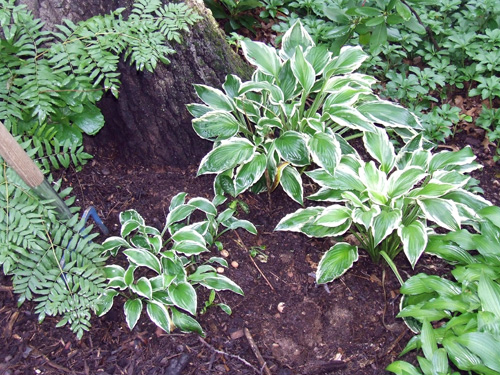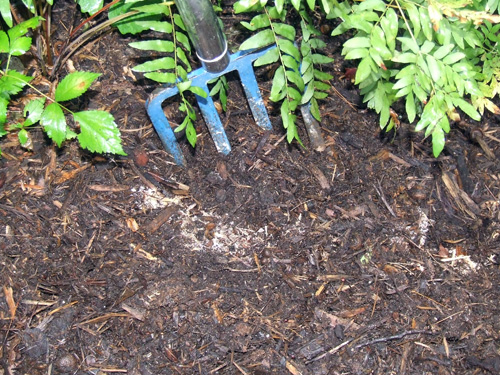Excess drying leads to poor mulch performance
Wood mulch applied too thickly then allowed to dry out may create a water-repellant condition that leads to poor perennial performance and even death.
Horticulture professionals, gardeners and even local garden centers tout the use of mulches in and around plants. Mulches have many benefits including reducing weed competition, enhancing soil temperature for optimum root growth and the most recognized benefit – moisture retention. However, some of our favorite mulches can actually become detrimental when it comes to moisture retention if not used correctly.
Good mulch gone bad
When wood mulches are applied too thickly then allowed to completely dry out, conditions are beneficial for the colonization by certain fungi that create water-repellant conditions throughout the mulch. This condition is coined “hydrophobic” or commonly called “hyper-dry.” If you ever have needed to remove mulch in the spring that has become caked and appears “petrified” before applying a new layer, you’ll know what I mean.
Applying mulch too close or over the top of perennials can lead to poor performance and even death when it becomes hydrophobic.
Avoiding conditions that exacerbate this situation is the first line of defense. When applying mulch, be sure that it is well-moistened and will allow irrigation or rainfall to penetrate. Wood mulches that receive routine irrigation are much less prone to this problem, but don’t underestimate if it has been applied too thickly.
Throughout the growing season, check the mulch, especially near the root flare of a tree, shrub or perennial crown, to be sure it is not applied too thick or too close. If mulch becomes hyper-dry, turn or “fluff” the mulch with a fork, allowing air and water to channel down to the soil level and maintain moisture by using irrigation if possible until the media is completely moist.
Using a fork to turn and break up hydrophobic mulch will allow water to penetrate.
Because wood mulches are carbon-based, apply fertilizer to the soil before applying the mulch layer to avoid nutrients being tied up by the mulch and to allow them to move into the root zone unimpeded. Gardeners have had great success applying 1 to 2 inches of compost and topdressing with an attractive wood mulch. Researchers agree that while many types of raw wood products may promote hydrophobic conditions, compost does not.
Mulch is still the number one cost cutting tool, in my opinion with regard to weed control and reducing the need for irrigation, but being aware of potential problems will allow you to avoid them in the future.
Find out about other educational resources and classes at www.migarden.msu.edu and at Finneran’s blog. You can contact the MSU Master Gardener Lawn and Garden Hotline at 888-678-3464 with your questions.
Related resources on water use or drought:
-
Gardening tips for wise use of your water resources, Mary Wilson, MSU Extension
-
Impacts of summer weather on landscape plants, Stephen Fouch, MSU Extension
-
Native plants for Michigan landscapes: Part 1 – Trees, Mary Wilson, MSU Extension
-
Native plants for Michigan landscapes: Part 2 – Shrubs, Mary Wilson, MSU Extension
-
Silence of the soaker hoses, Gretchen Voyle, MSU Extension
-
Tough plants for tough places: Grasses, Rebecca Finneran, MSU Extension
-
Water saving perennials: Carefree and beautiful without the fuss, Rebecca Finneran, MSU Extension



 Print
Print Email
Email






